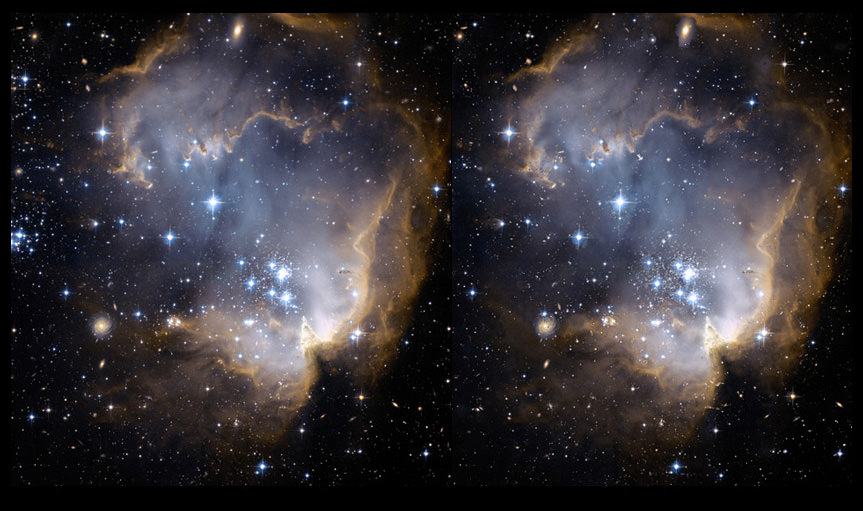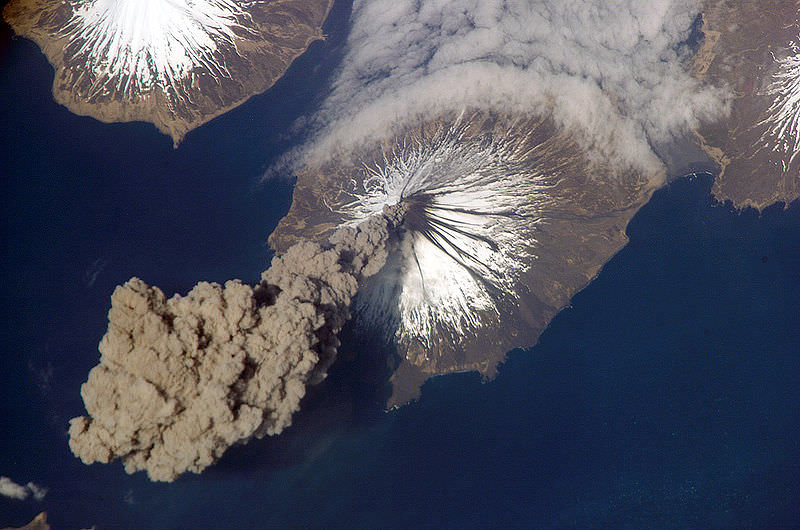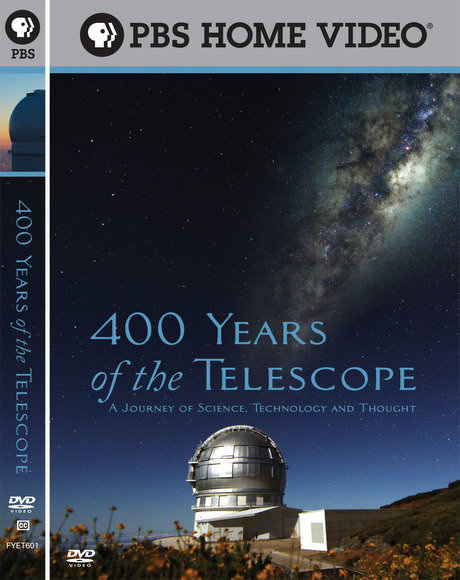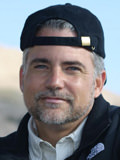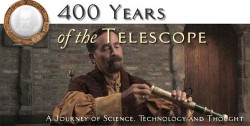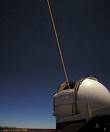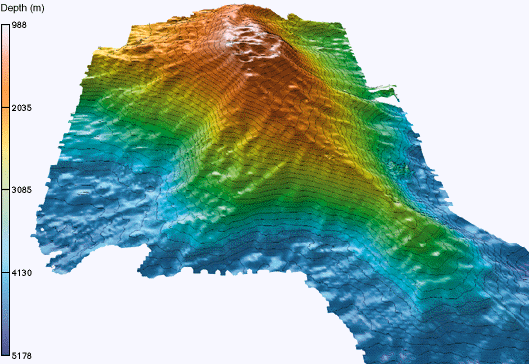[/caption]
It’s been awhile hasn’t it? Time may have passed, but absence makes the heart grow fonder. For those of you who have missed our very special dimensional looks into the Cosmos, then it’s high time we let our minds and eyes relax and we take a 200 thousand light-year distant journey towards the edge of the Small Magellanic Cloud for a look at a bright, young open cluster of stars known as NGC 602…
Whenever we present a dimensional visualization it is done in two fashions. The first is called “Parallel Vision” and it is much like a magic eye puzzle. When you open the full size image and your eyes are the correct distance from the screen, the images will seem to merge and create a 3D effect. However, for some folks, this doesn’t work well – so Jukka has also created the “Cross Version”, where you simply cross your eyes and the images will merge, creating a central image which appears 3D. Upon further study, we’ve also come to realize that there is a certain percentage of people who also are unable to make this happen as well. You aren’t weird – just a percentage. Here’s why…
Typical for hunting animals (as opposed to ‘prey’ animals), we have our eyes set in the front of our heads. Our eyes are typically about 2½ inches apart, and so they see slightly different versions of the scene in front of them, from which the visual part of our brain constructs an internal three-dimensional model. Thus a human being can directly estimate the distance of something without moving a muscle – an important evolutionary advantage for a hunter. The trick is to then ‘fool’ the brain into processing the photographic images as if they really were distant scenes, not just color photos a few inches away. First, you will need a piece of white card, about 12 inches long. You hold the card vertically between your eyes and the pictures, so that it touches the centerline of the stereo pairs. Next? A pair of cheap reading glasses. If you usually have to wear reading glasses then you’ll need a higher power. Try different pairs in the store until you find one that will allow you see sharply no further away than a little over 12 inches. That’s it! Then sit back, relax and prepare to be blown away…
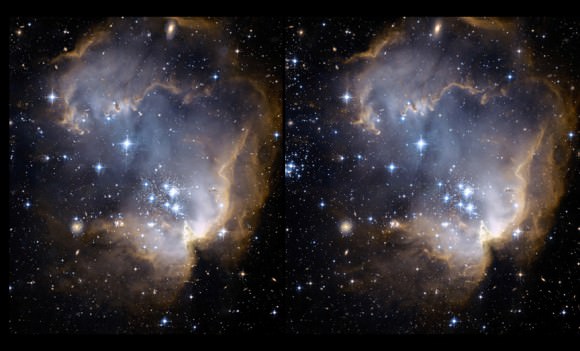
Cruising along some 200 thousand light-years away from the Milky Way is the Small Magellanic Cloud – a satellite galaxy of ours. Sitting on its edge is cloud of gas and dust which comprise a nebula known as M90, and within it shines a sparkling cluster of new stars called NGC 602. But these new stars aren’t shy… They’re hot and massive. The radiation and shock waves which pour from them have pushed the nebula away, compressing it and triggering new star formation. While these pre-main sequence embryonic suns lay hidden to all but infrared wavelengths, the beauty of this area is the chemical properties it shares with our own galaxy.
According to the studies of L.R. Carlson (et al) NGC 602’s star formation at a low chemical abundance makes it a “good analog to the early universe in terms of examining the processes and patterns of star formation. This cluster in particular is ideally suited to this aim. Its location in the wing of the SMC means that, while its chemical properties should be similar to those of the rest of the galaxy, it is relatively isolated.” Isolated… But young, very young. Says Carlson, “This pre-Main Sequence population formed coevally with the central cluster about 5 million years ago. Spitzer Space Telescope (SST) images of the region in all four Infrared Array Camera (IRAC) bands reveal a second population of Young Stellar Objects (YSOs), which formed after the stars seen with HST/ACS imaging. Some of these very young objects are still embedded in nebular material. We infer that star formation started in this region less than five million years ago with the formation of the central cluster and gradually propagated towards the outskirts where we find evidence of on going star formation less than a million years old.”
Another interesting factor is NGC 602’s position in the wing of the Small Magellanic Cloud leading to the Magellanic Bridge – a stream of neutral hydrogen which connects the two Magellanic Clouds like a invisible cord. While it’s mostly comprised of low-metallicity gas there have been two early-type stars found inside it. The Magellanic Bridge is also a favored region for investigations of interstellar gas and star formation in very low metallicity region… Much like the home of our bright young cluster. Why is this so fascinating? Because studying star formation in regions like this gives astronomers a look at what may happen during galaxy formation – long before heavier elements are created from successive generations of stars undergoing nuclear fusion.
So, as you look deep into this bridge between the stars, gaze with wonder at the long “elephant trunks” of dust and turn your mind towards these beautiful, bright blue stars still forming from gravitationally collapsing gas clouds. It is a very unique event, occurring where it should not happen – but is. A true bridge between the stars…
And touchstone to the Cosmos.
Many thanks to Jukka Metsavainio for his magic with Hubble Space Telescope images and allowing us this incredible look inside another mystery of space.

